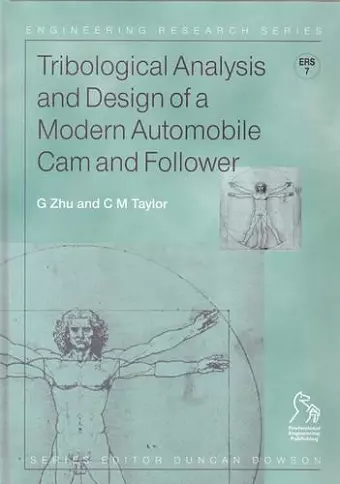Tribological Analysis and Design of a Modern Automobile Cam and Follower
Chris M Taylor author Guangrui Zhu author
Format:Hardback
Publisher:John Wiley & Sons Inc
Published:22nd Jun '01
Currently unavailable, and unfortunately no date known when it will be back

An Engineering Research Series title.
This excellent and long awaited book is based upon extensive research carried out by the Institute of Tribology at the University of Leeds in the UK and the Ford Motor Company Ltd. It is concerned with both the theoretical and experimental study of the tribological performance of an automobile valve train, having an offset taper cam and a domed follower, incorporated with an hydraulic lash adjuster, with particular reference to the ZETA engine valve train.
A sophisticated theoretical model has been developed that predicts the tribological performance of the valve train, and also provides a useful tool for the consideration of the tribological design of valve trains. Additionally the model can estimate the instantaneous and average rotational frequency of the follower, and the performance of the hydraulic lash adjuster.
In order to validate the theoretical model, the experimental measurements have been correlated with the theoretical predictions that simulate the test conditions of the valve train. The agreement between the measurements and the predictions show that the model is very reliable. This gives readers great confidence in using the model when dealing with novel and alternative designs of the valve train.
COMPLETE CONTENTS:
- Part One – Theoretical Formulation. Kinematics and dynamics of the cam and follower
- Hydraulic lash adjuster
- The maximum hertzian stresses
- Asperity interactions
- The oil film thickness
- Friction and power loss of the valve train
- The rotation of the follower
- The overall solution procedure and input/output data
- An example of the tribological analysis of a valve train.
- Part Two – Experimental Study. Test apparatus and the instrumentation
- Calibration of the instrumentation and commissioning tests
- Test procedure
- Data processing
- Experimental results and discussions
- Part Three – Correlation of theory and experiments. Experimental evidences
- Theoretical predictions
- Comparison of results and discussions
- Overall conclusions. <
ISBN: 9781860582035
Dimensions: 305mm x 214mm x 18mm
Weight: 907g
176 pages